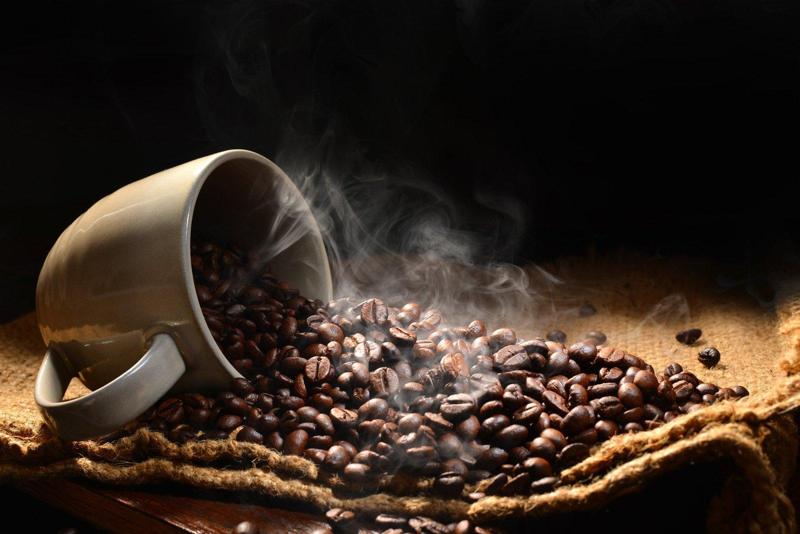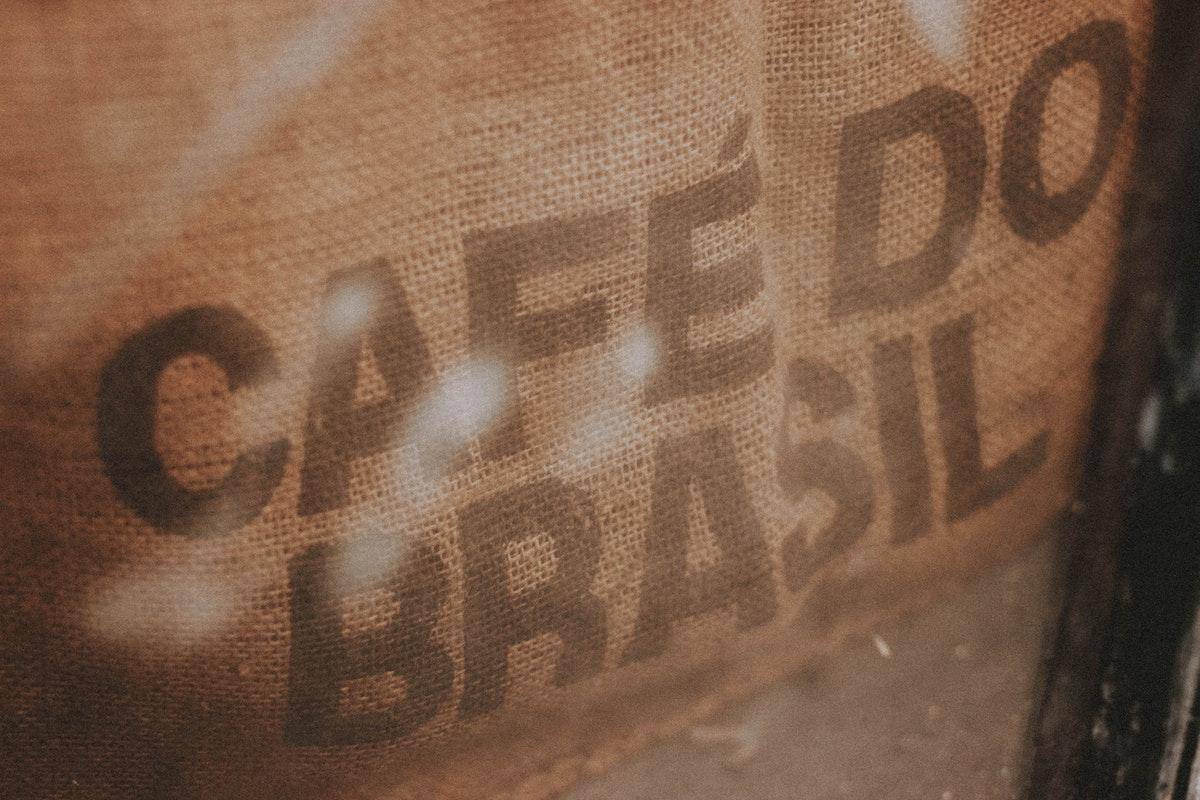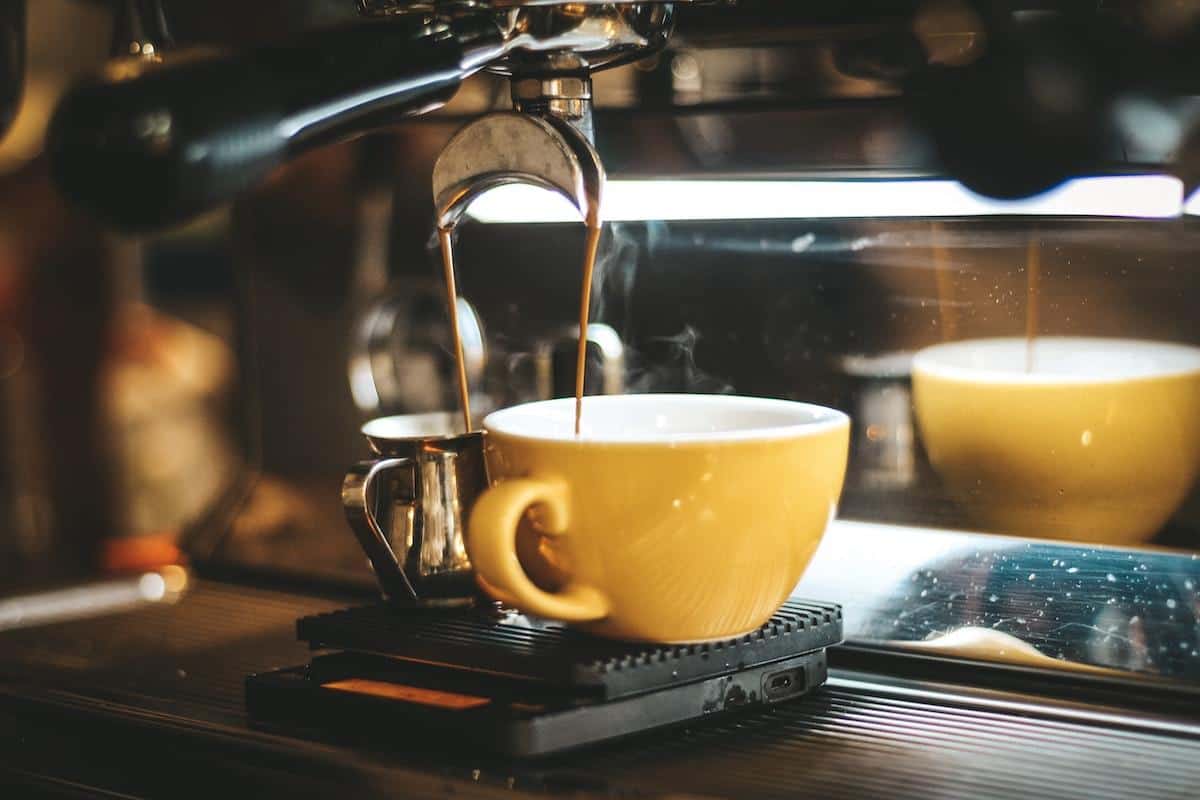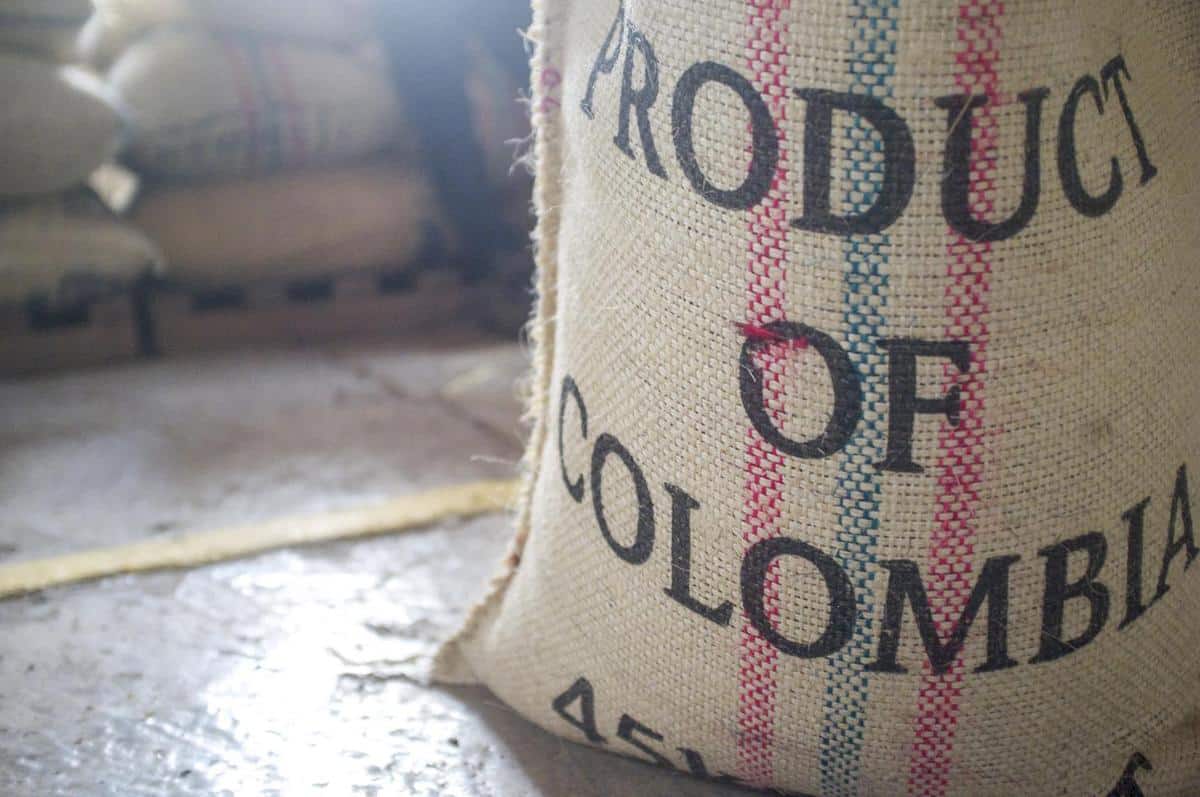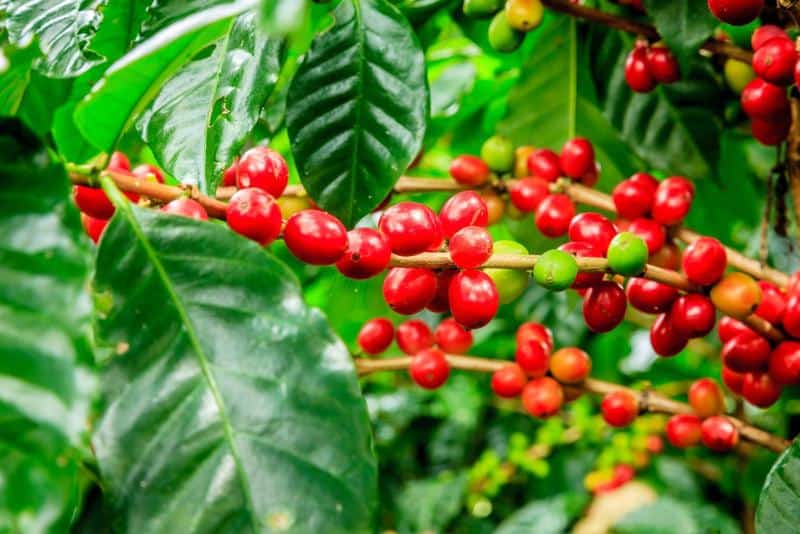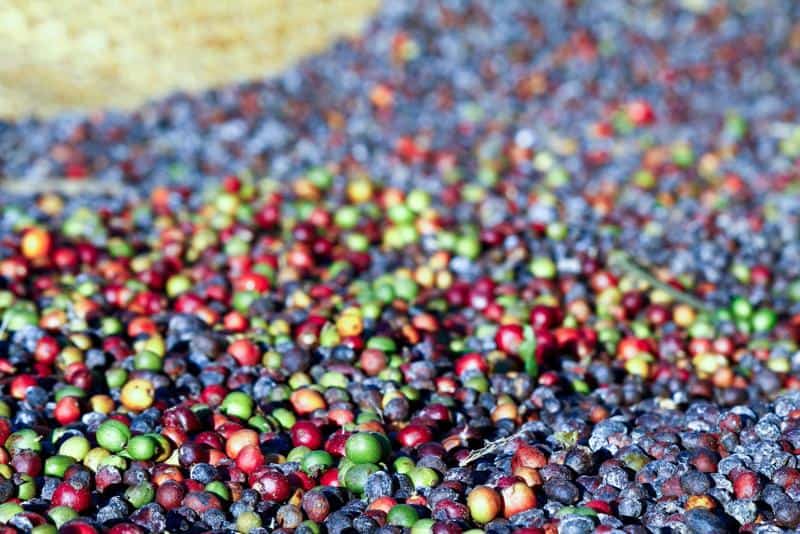Espresso beans have become a staple for coffee enthusiasts, offering a rich and concentrated shot of caffeine and flavor. However, there is often confusion surrounding the distinction between espresso beans and regular coffee beans. In this article, we will delve into the world of espresso and coffee, exploring their differences in the brewing process, taste profiles, caffeine content, brewing mechanics, versatility in applications, price and availability, as well as personal preferences.
The demand for both espresso and coffee has risen significantly in recent years as more people appreciate the variety of flavors and experiences that these beverages offer. While some may assume that espresso beans and coffee beans are interchangeable terms for the same product, they are actually fundamentally different. By understanding these differences, individuals can make informed choices about which type of bean best suits their needs.
To begin with, it is important to uncover the misconceptions that surround espresso beans and coffee beans. Despite originating from the same plant-the coffee plant-espresso beans undergo a distinct roasting process compared to regular coffee beans. Additionally, the brewing methods used for each differ significantly. By dispelling these myths and gaining a deeper understanding of these two types of beans, one can better appreciate their unique characteristics.
Join us as we embark on a journey through the world of espresso and coffee beans. From uncovering their brewing secrets to unraveling their diverse flavor profiles, we will leave no stone unturned. Whether you prefer a quick jolt from an intense shot of espresso or enjoy savoring a smooth cup of brewed coffee in the morning sun, this article aims to help you understand what sets these two popular beverages apart.
So grab your favorite mug or demitasse cup as we unravel the mysteries behind espresso beans versus regular coffee beans-the essential guide for every caffeinated connoisseur.
Unveiling the Brewing Process
Espresso beans and coffee beans may come from the same plant, but they undergo different processes to achieve their distinct flavors. Understanding the brewing process is essential in distinguishing between these two types of beans.
Firstly, both espresso beans and coffee beans originate from the coffee plant. They are typically grown in regions with favorable climate conditions and harvested once they reach full ripeness. This shared origin is where the similarities between the two end.
The roasting process significantly differs for espresso and regular coffee beans. Espresso beans are roasted for a longer period at higher temperatures, resulting in a darker roast profile. On the other hand, regular coffee beans are often roasted for a shorter time at lower temperatures to achieve a lighter or medium roast.
When it comes to brewing methods, espresso requires specialized equipment that utilizes pressure and carefully controlled water temperature. Espresso machines force hot water through tightly packed grounds under high pressure, resulting in a concentrated and intense shot of coffee. In contrast, regular coffee is typically brewed using drip machines, pour-over methods, French presses, or cold brew techniques that allow for slower extraction times and more diluted beverages.
In summary, while both espresso and coffee share the same origins in the coffee plant, their flavor profiles are determined by differences in roasting techniques and brewing methods. Espresso beans undergo a longer, higher-temperature roasting process and are brewed using specialized equipment that relies on pressure and precise water temperature control.
Regular coffee beans, however, typically receive lighter or medium roasts and can be brewed with various methods that result in slower extraction times and less concentrated cups of joe.
The Science Behind Flavor
Espresso and regular coffee not only differ in their brewing methods and caffeine content, but they also exhibit distinct flavor profiles. Understanding these taste profiles can help coffee lovers make informed choices about which bean type suits their preferences best.
When it comes to flavor, espresso beans are known for their bold and intense taste. The brewing process of espresso extracts the oils and solids from the coffee more efficiently, resulting in a concentrated and robust flavor. Espresso is characterized by its rich, full-bodied taste with notes of chocolate, caramel, or even fruitiness. The brewing method creates a more balanced flavor profile with less acidity and bitterness compared to regular coffee.
On the other hand, regular coffee beans offer a wider range of flavors due to the variety of brewing methods used. Regular coffee can be brewed through methods such as pour-over, French press, or drip brewing. These methods allow for less intensity and a more nuanced flavor compared to espresso.
Regular coffee often features a lighter body with a greater emphasis on floral or fruity characteristics. The acidity in regular coffee can vary depending on factors such as bean origin, roast level, and brewing technique.
It is important to note that personal preferences play a significant role in determining which flavor profile one prefers. Some individuals enjoy the strong punch of an espresso shot while others may prefer the milder flavors found in regular brewed coffee. Exploring different types of coffee beans from various regions and experimenting with different roasting levels can lead to discovering unique flavors that suit individual tastes perfectly.
Ultimately, understanding the science behind the flavor profiles allows consumers to make informed choices based on their preferences. Whether it’s the bold intensity of espresso beans or the nuanced flavors of regular coffee beans, there is a wide world of tastes waiting to be explored in every cup of java we enjoy.
Caffeine Content Showdown
When it comes to choosing between espresso beans and coffee beans, one important factor to consider is the caffeine content. Caffeine is a natural stimulant that provides an energy boost, making it a crucial aspect for coffee lovers. In this section, we will compare the caffeine content in espresso beans versus regular coffee beans, explain the effects of caffeine on the body, and discuss how different factors such as bean type, roast intensity, and brewing method can impact caffeine extraction.
Firstly, let’s delve into the comparison of caffeine content. Contrary to popular belief, espresso is not necessarily higher in caffeine than regular coffee.
While many assume that the concentrated shot of espresso equates to more caffeine per serving, it is essential to note that espresso actually contains less caffeine per ounce compared to a cup of coffee.
However, due to its smaller serving size (around 1-2 ounces for a single shot), when consumed as a shot or in specialty beverages like lattes or cappuccinos which use multiple shots, it can have a higher total caffeine content compared to a standard cup of brewed coffee.
Next, let’s explore the effects of caffeine on the body and its importance for coffee enthusiasts. Caffeine stimulates the central nervous system and enhances brain function by blocking adenosine receptors. This process leads to increased alertness and focus as well as reduced feelings of fatigue.
Additionally, caffeine has been found to improve athletic performance and increase metabolism temporarily. However, it is important to consume caffeine in moderation as excessive intake can lead to side effects like jitteriness, anxiety, and insomnia.
Finally, various factors come into play when considering how much caffeine you are getting from either espresso or regular coffee. Bean type and roast intensity are key determinants as darker roasts tend to have slightly less caffeine than lighter roasts since longer roasting times lead to some caffeine being lost during the process.
Brewing methods also affect caffeine extraction, as espresso machines use high water pressure and relatively short brew times to extract flavor from the beans, resulting in a higher concentration of caffeine. Conversely, drip coffee makers involve more prolonged steeping, which results in a higher overall extraction but a lower concentration of caffeine.
| Bean Type | Caffeine Content (per 8-ounce serving) |
|---|---|
| Espresso | 63-85 mg |
| Regular Coffee | 95-165 mg |
A Look at Brewing Mechanics
The brewing mechanics behind espresso extraction involve several key factors that contribute to its unique flavor and characteristics. Understanding these elements can help coffee enthusiasts appreciate the intricacies of making a perfect cup of espresso.
One important aspect of espresso extraction is the science behind it, including the pressure and water temperature used during the brewing process. Unlike other brewing methods, which rely on gravity to push water through the coffee grounds, espresso machines use high-pressure pumps to force hot water through tightly packed grounds. This higher pressure allows for a faster and more efficient extraction, resulting in a stronger and more concentrated flavor.
Another crucial factor in espresso extraction is the grind size of the coffee beans. Espresso requires a much finer grind compared to regular coffee because of its shorter brewing time. The smaller particle size increases surface area contact with water, allowing for better extraction of flavors and oils from the beans. A consistent and precise grind size is essential to ensure an even extraction across all coffee particles.
Additionally, one distinguishing feature of espresso extraction is the formation of crema-the creamy, caramel-colored foam that sits on top of an espresso shot. Crema plays a significant role in enhancing both taste and aroma. It consists mainly of aromatic compounds that are released during the high-pressure brewing process. The presence of crema indicates that proper pressure and temperature were maintained during extraction, resulting in a well-balanced and flavorful shot.
To summarize, understanding the brewing mechanics behind espresso extraction involves considering factors such as pressure, water temperature, grind size, and crema formation. The combination of these elements creates a richly flavored beverage that distinguishes itself from regular coffee. Aspiring baristas or home brewers can experiment with variables such as brew time, temperature adjustments, or different bean origins to achieve their desired flavor profile in their pursuit of mastering espresso brewing techniques.
| Aspect | Description |
|---|---|
| Pressure | Espresso machines use high-pressure pumps to force hot water through tightly packed grounds. |
| Water temperature | The temperature of the water used in espresso extraction is typically between 195°F and 205°F (90°C to 96°C). |
| Grind size | An espresso grind is much finer compared to regular coffee to allow for a shorter brewing time and improve extraction. |
| Crema formation | The presence of crema indicates a successful extraction process, contributing to flavor and aroma. |
Versatility in Applications
Espresso and coffee beans have their own unique characteristics that make them suitable for different brewing methods and applications. In this section, we will explore the versatility of both espresso and coffee beans in various uses, ranging from traditional beverages to creative recipes.
Versatility of Espresso Beans
Espresso beans are widely known for producing bold, concentrated shots of espresso. However, they can also be used to create a variety of other beverages that showcase their rich flavor profile. Some popular options include:
- Lattes: Combining steamed milk with a shot or two of espresso creates a creamy and comforting beverage.
- Cappuccinos: Equal parts of espresso, steamed milk, and frothed milk are layered to achieve a balanced and velvety drink.
- Americanos: A simple yet satisfying drink made by diluting an espresso shot with hot water.
- Macchiatos: Traditionally served as a small amount of milk lightly “stained” with an espresso shot.
Additionally, espresso beans can be utilized in baking and cooking to enhance the flavor of various dishes. They can be ground into a fine powder to add depth to desserts like tiramisu or incorporated into savory recipes such as coffee-rubbed meats or mocha chili. The intense taste profile of espresso beans makes them an excellent choice for those seeking robust flavors in their culinary creations.
Versatility of Coffee Beans
Coffee beans meant for drip brewing offer a broader range of possibilities compared to their espresso counterparts. Here are some popular uses for regular coffee beans:
- Drip Brewing: Coffee makers that employ gravity-driven drip brewing processes extract flavors more gently from the grounds, resulting in a milder and slightly less concentrated beverage.
- French Press: Known for producing a full-bodied cup of coffee, the French press method involves steeping coarse-ground coffee in hot water before pressing it through a filter.
- Cold Brew: This method involves steeping coffee grounds in cold water for an extended period, resulting in a smooth, less acidic flavor and concentrated caffeine kick.
Beyond the traditional brewing methods, coffee beans can be incorporated into a variety of recipes and beverages. They are often utilized in creating coffee-flavored desserts such as cakes, cookies, and ice cream. Additionally, cold brew coffee can be used to make refreshing summer beverages like iced coffee or coffee-based cocktails.
Overall, both espresso and coffee beans offer numerous possibilities for exploring the world of coffee beyond a simple cup of joe. Whether you prefer the bold and intense nature of espresso or the milder flavors obtained through regular brewing methods, both types of beans have versatility that extends far beyond traditional beverages. Experimenting with different applications is an excellent way to expand your appreciation for the unique qualities each bean brings to the table.
Price and Availability
Factors Affecting Price
When it comes to price, there are several factors that can affect the cost of both espresso beans and coffee beans. One of the main factors is the quality of the beans. Specialty grade coffee, which includes high-quality beans with unique flavor profiles and characteristics, tends to be more expensive compared to lower grade or commodity coffee. Additionally, certain origins or regions known for producing exceptional coffee may also command a higher price due to their reputation.
The method of processing the beans can also impact price. For example, washed processing, a method that involves removing the pulp from the coffee cherry before drying the beans, is generally more labor-intensive and therefore more expensive than natural processing where the whole cherry is dried.
Furthermore, supply and demand dynamics play a significant role in determining prices. If there is a limited supply of a particular type of bean or if there is high demand for it, prices are likely to be higher. Conversely, if there is an oversupply or low demand for certain beans, prices may be lower.
Availability in Stores and Online
When it comes to accessibility, both espresso beans and regular coffee beans can usually be found in local stores as well as online retailers. Local grocery stores often offer a variety of options ranging from pre-packaged ground coffee to whole bean selections. Many specialty stores or cafes may carry a wider range of options for customers seeking specific origins or blends.
Online retailers have become increasingly popular for purchasing both types of beans due to their wide selection and convenience. Customers can easily compare prices, read reviews from other consumers, and have their preferred beans delivered right to their doorstep.
However, it’s important to note that while many local stores offer convenience and immediate access to coffee products, they may have a limited selection compared to online retailers. Furthermore, online retailers often have exclusive offerings or partnerships with specialty roasters that might not be available in local stores.
Finding Quality Beans at Affordable Prices
Finding high-quality coffee beans at affordable prices doesn’t have to be a challenge. One option is to explore local roasters or specialty shops, as they often offer freshly roasted beans at competitive prices. Many roasters even provide information about the origin of the beans and the roast level, allowing consumers to make informed choices based on their preferences.
Another tip is to buy in bulk. Purchasing larger quantities of beans can often result in savings, especially if the beans are stored properly to maintain their freshness. Some online retailers also offer subscription services that provide regular deliveries of coffee beans at discounted rates.
Lastly, consider experimenting with different brands and blends. While certain well-known brands may come with a higher price tag, there are often lesser-known or smaller batch options that offer exceptional quality at more affordable prices. Trying out different brands can help identify hidden gems that meet both your taste preferences and budget constraints.
By being mindful of factors affecting price, exploring availability options, and seeking out affordable but high-quality coffee beans, consumers can find the perfect balance between cost and accessibility when it comes to choosing between espresso beans and regular coffee beans.
Personal Preferences
Factors to Consider
When deciding between espresso beans and coffee beans, it’s essential to consider several factors that may influence your choice. These factors include personal taste preferences, caffeine tolerance, and brewing convenience.
Taste Preferences
One of the most crucial factors in choosing between espresso beans and coffee beans is your taste preference. Espresso tends to have a bolder, more intense flavor profile with concentrated notes of chocolate, caramel, or even fruitiness depending on the bean variety. On the other hand, regular coffee offers a wider range of flavors and can be more nuanced in taste. Coffee enthusiasts enjoy exploring the different tasting notes found in single-origin coffees or blends.
If you prefer a strong and robust flavor with a shorter brew time, then espresso may be your preferred choice. However, if you enjoy a more diverse range of flavors and don’t mind a longer brewing process, regular coffee might be the better option for you.
Caffeine Tolerance
Caffeine content is another crucial factor to consider when making your decision. Espresso typically has higher caffeine content per ounce compared to regular coffee because it involves using finely ground beans extracted under pressure.
If you’re someone who relies on coffee as an energy boost or needs a higher caffeine dose to stay alert throughout the day, then espresso might be the right choice for you. However, if you’re sensitive to caffeine or prefer to consume less of it throughout the day, regular coffee might suit your needs better as it generally has lower caffeine content per serving.
Brewing Convenience
The convenience of brewing is another important aspect to think about when choosing between espresso beans and coffee beans.
Espresso machines are specifically designed for brewing espresso shots using finely ground espresso beans under high pressure. This method requires an investment in an espresso machine and additional accessories such as a grinder and tamper. It also requires a bit more skill and practice to achieve consistent results.
On the other hand, brewing regular coffee can be as simple as using a drip coffee maker or a French press. These methods are more accessible and don’t require any specialized equipment. Regular coffee brewing can be less time-consuming and more convenient for those who prefer a hassle-free morning routine.
Ultimately, considering your taste preferences, caffeine tolerance, and brewing convenience will help you make an informed decision when choosing between espresso beans and coffee beans.
Experimenting with Different Options
It’s worth noting that exploring various bean types, roasts, and brew methods allows you to discover new flavors and experiences. Don’t be afraid to step out of your comfort zone and try different options.
If you’re already an espresso enthusiast but want to experiment with regular coffee brewing methods, consider getting a French press or pour-over setup. These methods allow you to extract rich flavors from various coffee beans while maintaining control over the brewing process.
Likewise, if you primarily brew regular coffee but want to explore espresso-based beverages, you don’t need an expensive espresso machine. You can start by investing in a stovetop moka pot or an AeroPress for affordable and approachable home espresso alternatives.
By venturing into different brewing options, you might find that some days call for a quick shot of bold espresso while others are better suited for leisurely sipping on a flavorful cup of pour-over coffee. The beauty of the world of coffee lies in its versatility-there’s always something new to discover based on your personal preferences.
Conclusion
In conclusion, understanding the difference between espresso beans and coffee beans is essential for any coffee lover. Throughout this article, we have explored the brewing process, taste profiles, caffeine content, brewing mechanics, versatility in applications, price and availability, and personal preferences of both types of beans.
While espresso beans and coffee beans share a common origin from the coffee plant, they undergo different roasting processes. This results in distinct flavor profiles, with espresso often being more bold and intense compared to regular coffee. Additionally, espresso beans require finer grinding and specific extraction methods using high pressure and water temperature.
When it comes to caffeine content, espresso has a higher concentration compared to regular coffee due to the stronger brewing process. However, factors such as bean type, roast intensity, and brewing method can also affect caffeine extraction.
Both types of beans have their own uses and applications. Espresso is commonly used for making shots as well as various milk-based beverages like lattes and cappuccinos. On the other hand, regular coffee beans are versatile in drip brewing, French press brewing methods, as well as cold brews.
Price and availability can vary for both types of beans depending on factors like quality and sourcing. It is important for consumers to consider personal taste preferences, caffeine tolerance levels, and convenience when choosing between espresso or coffee beans.
Ultimately, whether you prefer espresso or regular coffee beans boils down to personal preference. What matters most is enjoying your cup of joe in whatever form brings you the most pleasure. So go ahead and savor every sip.
Frequently Asked Questions
What kind of beans are used for espresso?
The type of bean that is typically used for espresso is known as Arabicabean. Arabica beans are favored for making espresso due to their higher level of acidity, which adds complexity and brightness to the taste.
Additionally, Arabica beans have a sweeter and more nuanced flavor profile compared to other varieties, making them ideal for achieving the desired flavors in espresso.
Are espresso beans different than coffee beans?
Espresso beans are not inherently different from coffee beans in terms of the plant they come from or their basic properties. Both types can be sourced from various coffee plants such as Arabica or Robusta.
What sets them apart is primarily how they are roasted and ground. In general, espresso beans tend to be roasted darker than coffee beans, which enhances their rich flavors and ensures an appropriate extraction during the brewing process.
Can any beans be espresso beans?
Technically speaking, any type of coffee bean can be used to make espresso. However, certain types are better suited for producing superior results in terms of flavor and aroma.
As mentioned earlier, Arabica beans are highly preferred in the world of espresso due to their complex taste profiles. While some might argue that Robusta beans with their stronger and bitter flavors can also be used for espresso, they often produce a lesser quality shot when compared to Arabica.
Is espresso the same as coffee?
Espresso is a specific brewing method used to make coffee; it is not synonymous with regular brewed coffee itself. The main difference between espresso and regular coffee lies in the preparation process.
Whereas regular coffee involves water passing through ground coffee at a slower rate through methods like pour-over or drip brewing, espresso entails forcing pressurized hot water through finely ground coffee using an espresso machine or stovetop device such as a Moka pot or Aeropress.
Can I use regular coffee beans for espresso?
Yes, you can use regular coffee beans for brewing espresso, but there may be some trade-offs regarding taste and quality compared to using specifically roasted espresso beans. Regular coffee beans might lack the desired characteristics needed for a classic espresso, such as the necessary acidity and complex flavors.
However, with the right grind size, extraction time, and machine adjustment, it is possible to produce a decent espresso using regular coffee beans. It’s worth experimenting with different beans and adjusting brewing parameters to find a taste you enjoy.



